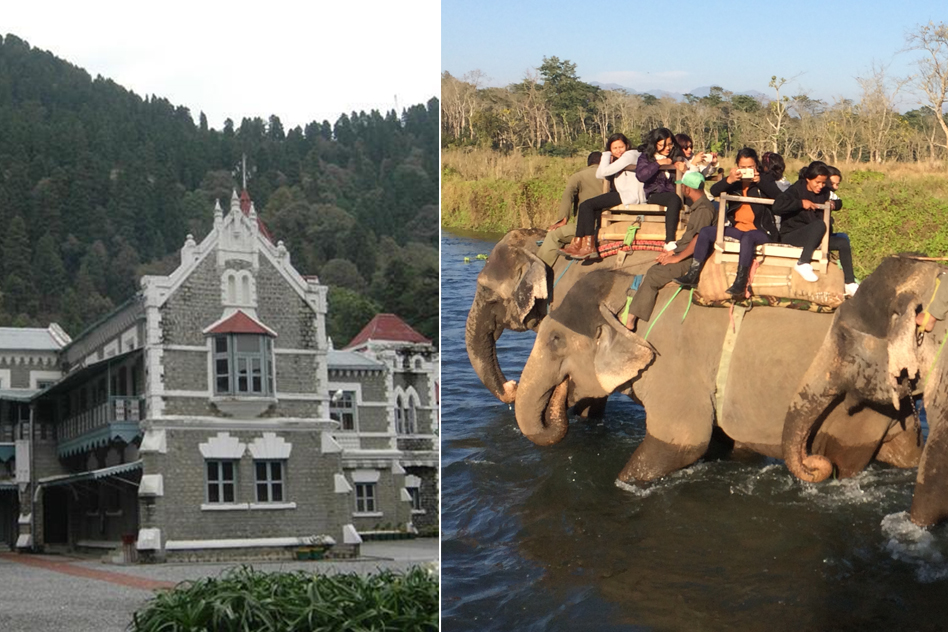
In A Welcome Move, Uttarakhand HC Banned Animal Rides At National Park
6 Aug 2018 11:54 AM GMT
Following the citation in Wildlife Protection Act 1972, and the Prevention of Cruelty to Animals Act 1960, Uttarakhand Government bans the commercial use of elephants for a joy ride at Jim Corbett and Rajaji Tiger Reserve in the state.
In addition to this welcoming move, the Uttarakhand High Court, as reported by Hindustan Times, also confined the number of gypsies entering the National Park to only 100 per day. It also ordered Chief Wildlife Warden to take control of the private elephants within 24 hours.
However, the gypsy owners and resort owners are in for a disappointment as presently, 200 gypsies would enter the protected area each day; while the resort owners conducted the elephant rides. On the other hand, ecologists, environmentalists and wildlife activists are delighted about the decision.
A division bench headed by Justice Rajiv Sharma and Lok Pal Singh issued an order saying, “Banning the commercial use of elephants in the entire Uttarakhand till further orders.” The court further, asked the Chief Warden to issue proper receipts to the elephant owners and conduct proper medical examination and to look after the health of elephants.
Speaking about the decision, the High Court further pronounced that the elephants shall be temporarily kept at Rajaji National Park, Chilla. The injured and maimed elephants shall be attended to by veterinary doctors within 12 hours.
Elephant Ride: A Cruel Tourist Attraction
A lot of us have gone for elephant rides. Ever wondered what a few minutes of pleasure does the animal?
Posted by The Logical Indian on Sunday, March 18, 2018
Leaving no stone unturned, the High Court further directed the senior superintendents of police of Nainital, Udham Singh Nagar, Haridwar, and Pauri districts to furnish complete assistance to the forest officials in saving the elephants.
The High Court has further directed the state government to ensure that not more than 100 gypsies, including both commercial and private, be allowed to enter the Sitabani, Bijrani and Dhela zones of Corbett and Kalagarh and Rajaji National Park in a day.
The Court also declared that only private vehicles which possess the valid permits issued by RTO and the forest officials will be allowed in the National Parks. “The Wildlife Institute, Dehradun, is directed to carry out a survey within three months to assess the carrying capacity of these zones pertaining to the number of vehicles that can be permitted to ply to avoid minimum disturbance to the wildlife,” the court said.
One of the many responsibilities of the Chief Wildlife Warden is to publish the list of the private and commercial gypsies with their registration numbers, owners’ name and drivers’ name on their official website.
How was the order passed?
According to reports, this move came into force after the chairperson of a Ramnagar-based NGO, Himalayan Yuva Gramin Vika Sanstha, Mayank Mainali, filed a public interest litigation (PIL) in 2012 stating the environmental concerns as the domestic elephants are hurt during the rides and they are not treated well. He also said that vehicles should be allowed where there are roads inside the park.
The next hearing in the case has been fixed on August 6.
Presence of Indian Elephants
Uttarakhand, a state in northern India crossed by the Himalayas, is home for a large number of animals including Bengal Tigers and other native wildlife. The Jim Corbett Park is declared a National Park by the Central Government and one of the very first of its kind. This Wildlife Reserve was established way back in 1936. This is where the ‘Tiger Project’ took its first step. This National Park is known for the presence of Indian Elephant.
Three sanctuaries in Dehradun Shivaliks – Rajaji, Motichur, and Chilla were amalgamated into a large protected area and named Rajaji National Park in 1983, after the famous freedom fighter Late Sri C. Rajagopalchari, popularly known as Rajaji. Rajaji National Park has a wide range of various animals like leopard, jungle cat, cheetah, barking deer, sloth bear, king-cobra amongst others.
Also, read: Kerala Temple Sets An Example By Replacing Elephants With Wooden Structures For Festivals
 All section
All section













